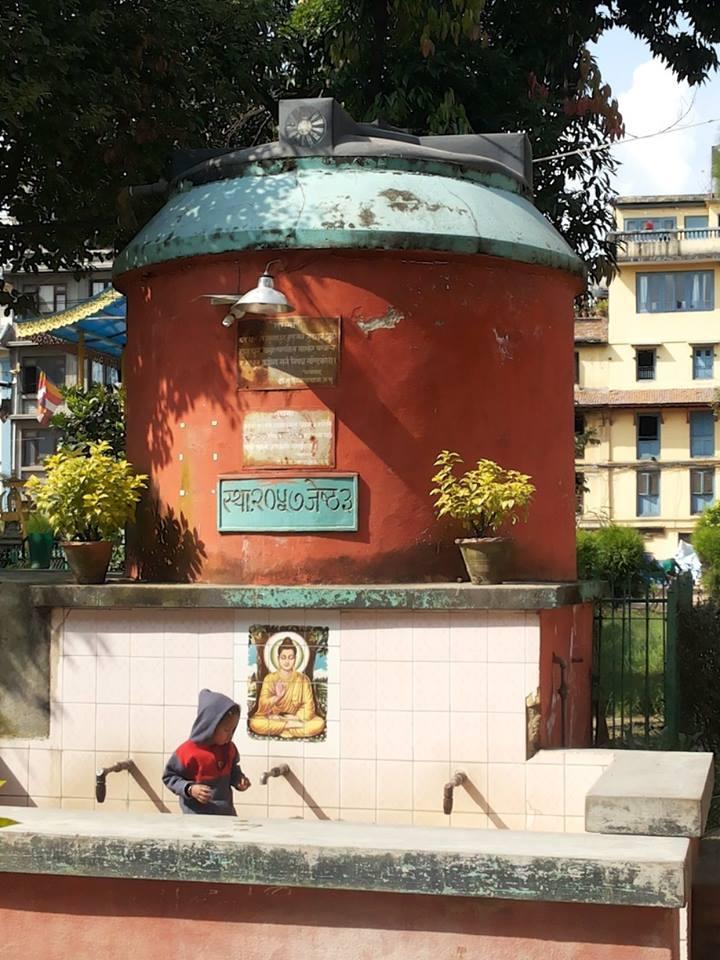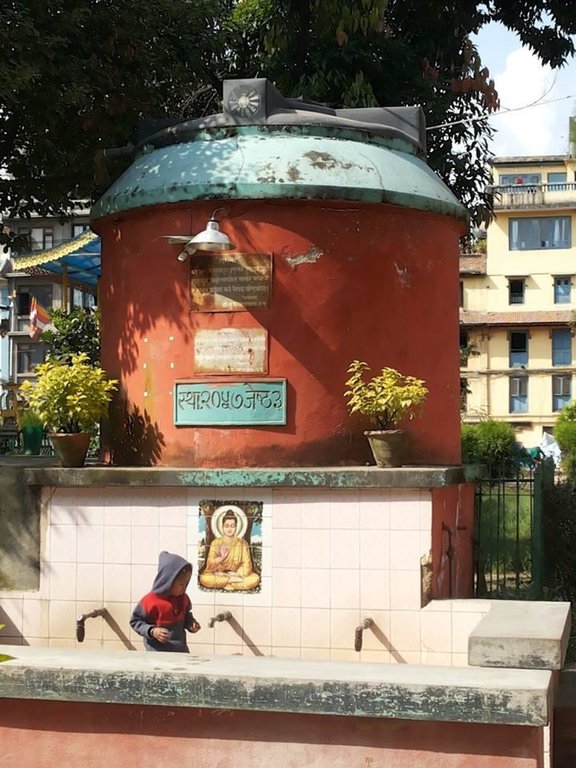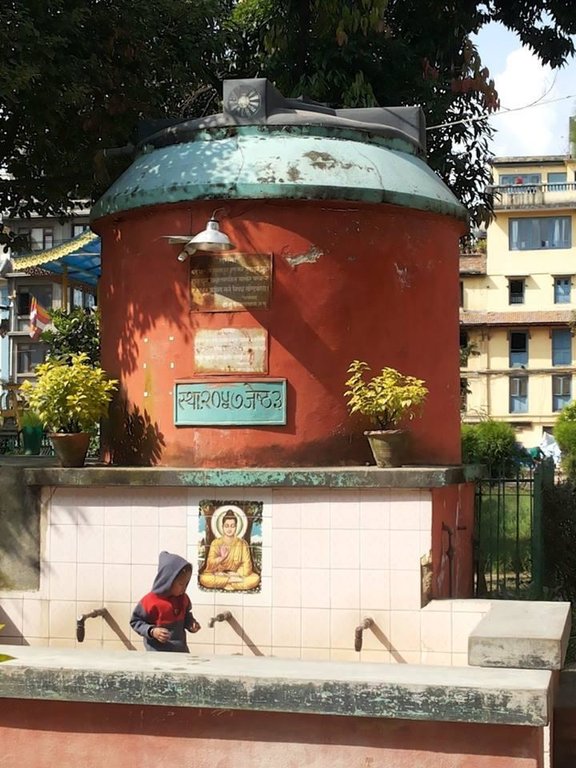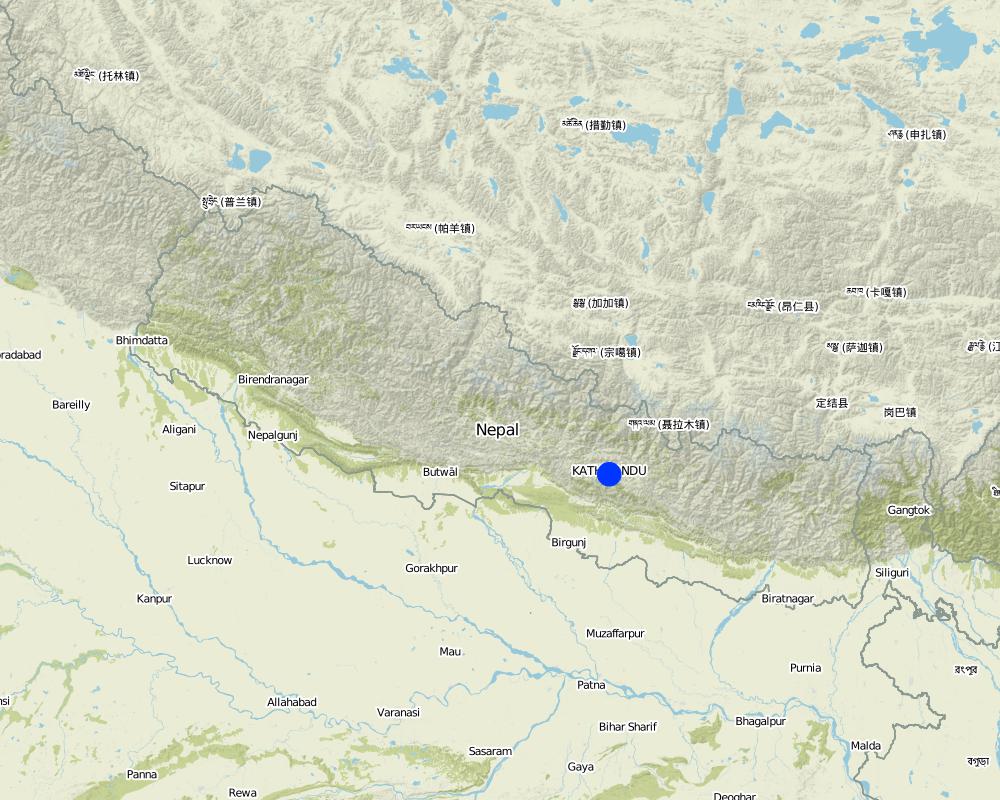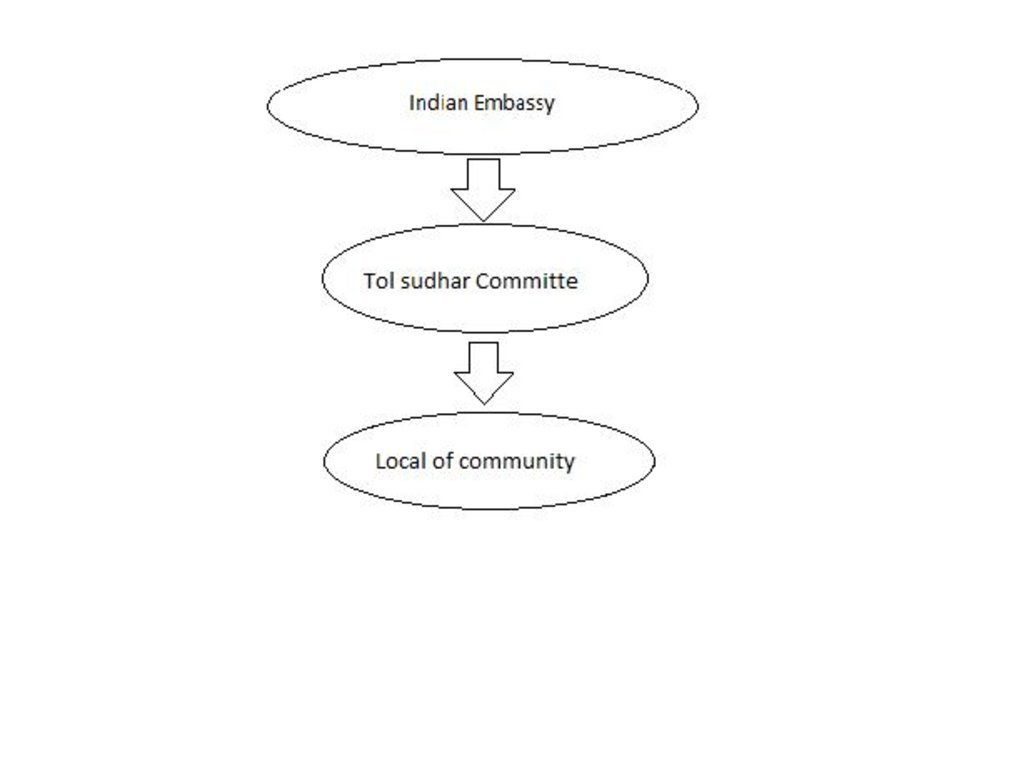Community approach of groundwater recharge in Lalitpur,Nepal [Nepal]
- Creation:
- Update:
- Compiler: Sabita Aryal
- Editor: –
- Reviewer: Fabian Ottiger
Vu Jal Uttpati-Nepali
approaches_2481 - Nepal
View sections
Expand all Collapse all1. General information
1.2 Contact details of resource persons and institutions involved in the assessment and documentation of the Approach
SLM specialist:
Bhattarai Saddikshya
Kathmandu University
Nepal
SLM specialist:
Shakya Anish Ratna
Kathmandu University
Nepal
SLM specialist:
Shrestha Shiwani
Kathmandu University
Nepal
SLM specialist:
Rajendra Shakya
980842772
Nyakhachowk,Lalitpur
Nepal
Name of the institution(s) which facilitated the documentation/ evaluation of the Approach (if relevant)
Kathmandu University (KU) - Nepal1.3 Conditions regarding the use of data documented through WOCAT
The compiler and key resource person(s) accept the conditions regarding the use of data documented through WOCAT:
Yes
1.4 Reference(s) to Questionnaire(s) on SLM Technologies

Ground Water Recharge in Nyhakha Chuke Tole for … [Nepal]
Ground Water Recharge in Nyhakka Chuke tole for Domestic use.
- Compiler: Sabita Aryal
2. Description of the SLM Approach
2.1 Short description of the Approach
Groundwater recharge by rainwater for domestic purpose in Lalitpur,Nepal
2.3 Photos of the Approach
2.5 Country/ region/ locations where the Approach has been applied
Country:
Nepal
Region/ State/ Province:
Bagmati
Further specification of location:
Lalitpur
Map
×2.6 Dates of initiation and termination of the Approach
Indicate year of initiation:
2001
2.7 Type of Approach
- recent local initiative/ innovative
2.8 Main aims/ objectives of the Approach
The Approach focused mainly on SLM with other activities
Recharge of the ground water
providing water for domestic use like drinking,cleaning etc
long term supplement of water
livelihood improvement
The SLM Approach addressed the following problems: conflict over resource use
lack of technical knowledge
lack of cash to invest in SLM
2.9 Conditions enabling or hindering implementation of the Technology/ Technologies applied under the Approach
social/ cultural/ religious norms and values
- hindering
wells are considered as place where God lives especially Hindu myth,so any change in water system of well is considered unauspicious
Treatment through the SLM Approach: awareness of public is the only treatment
availability/ access to financial resources and services
- hindering
Some Financial problems
Treatment through the SLM Approach: collection of money from households
legal framework (land tenure, land and water use rights)
- enabling
The existing land ownership, land use rights / water rights greatly helped the approach implementation: community ownership meant no hinderance to development
knowledge about SLM, access to technical support
- hindering
lack of tools and technology
Treatment through the SLM Approach: consultancy with experts
3. Participation and roles of stakeholders involved
3.1 Stakeholders involved in the Approach and their roles
- local land users/ local communities
Residence of the locality. Both gender
- local government
Local leaders
provided fund-Lalitpur sub-metropolitan municipality
- national government (planners, decision-makers)
- international organization
USaid,Indian embassy
3.2 Involvement of local land users/ local communities in the different phases of the Approach
| Involvement of local land users/ local communities | Specify who was involved and describe activities | |
|---|---|---|
| initiation/ motivation | self-mobilization | local people felt the deficiency of water; they need to solve the problem so formed a committee to investigate and solve the problem |
| planning | self-mobilization | resident engineers and local people cooperated to solve problem |
| implementation | self-mobilization | The implementation was according to the planning |
| monitoring/ evaluation | interactive | monitoring of water level and quality were done on weekly basis |
| Research | none |
3.3 Flow chart (if available)
Description:
The Indian embassy donated materials, the tol sudhar committee gave some financial inputs which was then provided to the local community for the initiation of the project
3.4 Decision-making on the selection of SLM Technology/ Technologies
Specify who decided on the selection of the Technology/ Technologies to be implemented:
- land users alone (self-initiative)
Explain:
problems were registered;investigation was done by the local community;decision was made by the local people
Decisions on the method of implementing the SLM Technology were made by by land users* alone (self-initiative / bottom-up). local people along with the help of some specialist,engineers from the same locality
4. Technical support, capacity building, and knowledge management
4.1 Capacity building/ training
Was training provided to land users/ other stakeholders?
Yes
- local people
Form of training:
- learning by doing
Subjects covered:
ground water recharge
sustainable use of water
4.2 Advisory service
Do land users have access to an advisory service?
Yes
Specify whether advisory service is provided:
- at permanent centres
Describe/ comments:
Name of method used for advisory service: committee in every locality; Key elements: agenda formation, meetings and discussions, final decision making
Advisory service is quite adequate to ensure the continuation of land conservation activities; its a national issue
4.3 Institution strengthening (organizational development)
Have institutions been established or strengthened through the Approach?
- yes, a little
Specify the level(s) at which institutions have been strengthened or established:
- local
Specify type of support:
- capacity building/ training
4.4 Monitoring and evaluation
Is monitoring and evaluation part of the Approach?
Yes
Comments:
bio-physical aspects were regular monitored by land users through observations; indicators: Water user
bio-physical aspects were regular monitored by land users through measurements; indicators: Water user
technical aspects were regular monitored by land users through observations; indicators: Water user
socio-cultural aspects were regular monitored by land users through observations; indicators: Water user
economic / production aspects were regular monitored by land users through observations; indicators: Water user
area treated aspects were regular monitored by land users through observations; indicators: Water user
no. of land users involved aspects were regular monitored by land users through observations; indicators: Water user
management of Approach aspects were monitored by None through observations; indicators
There were few changes in the Approach as a result of monitoring and evaluation: a hand pump was replaced by a recharge well
water is being collected with a motor,stored in tanks and distributed daily
There were few changes in the Technology as a result of monitoring and evaluation: water resisting plants were planted instead of demanding plants around recharge area
4.5 Research
Was research part of the Approach?
Yes
Specify topics:
- economics / marketing
- technology
Give further details and indicate who did the research:
local people with technical knowledge
Research was carried out on station
5. Financing and external material support
5.1 Annual budget for the SLM component of the Approach
If precise annual budget is not known, indicate range:
- 2,000-10,000
Comments (e.g. main sources of funding/ major donors):
Approach costs were met by the following donors: international non-government: 10.0%; local government (district, county, municipality, village etc): 10.0%; local community / land user(s): 80.0%
5.2 Financial/ material support provided to land users
Did land users receive financial/ material support for implementing the Technology/ Technologies?
Yes
5.3 Subsidies for specific inputs (including labour)
- equipment
| Specify which inputs were subsidised | To which extent | Specify subsidies |
|---|---|---|
| machinery | fully financed | motors, drill machines |
- construction
| Specify which inputs were subsidised | To which extent | Specify subsidies |
|---|---|---|
| Cement, bricks | fully financed | |
6. Impact analysis and concluding statements
6.1 Impacts of the Approach
Did the Approach help land users to implement and maintain SLM Technologies?
- No
- Yes, little
- Yes, moderately
- Yes, greatly
Did the Approach empower socially and economically disadvantaged groups?
- No
- Yes, little
- Yes, moderately
- Yes, greatly
Did the Approach improve issues of land tenure/ user rights that hindered implementation of SLM Technologies?
- No
- Yes, little
- Yes, moderately
- Yes, greatly
there was no hinderance The problem is likely to be overcome in the near future. the approach creates a framework for future use
Did other land users / projects adopt the Approach?
- No
- Yes, little
- Yes, moderately
- Yes, greatly
many places of Kathmandu and neighbouring sub urban cities have adopted this approach
Did the Approach lead to improved livelihoods / human well-being?
- No
- Yes, little
- Yes, moderately
- Yes, greatly
better quality of water resource was available
Did the Approach help to alleviate poverty?
- No
- Yes, little
- Yes, moderately
- Yes, greatly
no dependence on tank water suppliers where people have to pay a lot and no dependence on pipeline water of government
6.2 Main motivation of land users to implement SLM
- increased production
increase groundwater level
- environmental consciousness
water deficiency results conflicts
- aesthetic improvement
water for life
- well-being and livelihoods improvement
better water facility
6.3 Sustainability of Approach activities
Can the land users sustain what has been implemented through the Approach (without external support)?
- yes
If yes, describe how:
as approach is local initiative with local knowledge
6.4 Strengths/ advantages of the Approach
| Strengths/ advantages/ opportunities in the land user’s view |
|---|
|
local participation sufficiency of water resources increase quality of life (How to sustain/ enhance this strength: regular monitoring and evaluation Active participation of committee) |
| Strengths/ advantages/ opportunities in the compiler’s or other key resource person’s view |
|---|
|
local people are themselves responsible self motivation and local participation is high (How to sustain/ enhance this strength: increase in awareness regular maintenance active participation of the committee ) |
6.5 Weaknesses/ disadvantages of the Approach and ways of overcoming them
| Weaknesses/ disadvantages/ risks in the compiler’s or other key resource person’s view | How can they be overcome? |
|---|---|
| recharge can degrade the aquifer unless quality control of the injected water is adequate | treatment of water using filters and locally available materials like charcoal,gravels,chips |
7. References and links
7.1 Methods/ sources of information
- field visits, field surveys
- interviews with land users
Links and modules
Expand all Collapse allLinks

Ground Water Recharge in Nyhakha Chuke Tole for … [Nepal]
Ground Water Recharge in Nyhakka Chuke tole for Domestic use.
- Compiler: Sabita Aryal
Modules
No modules


